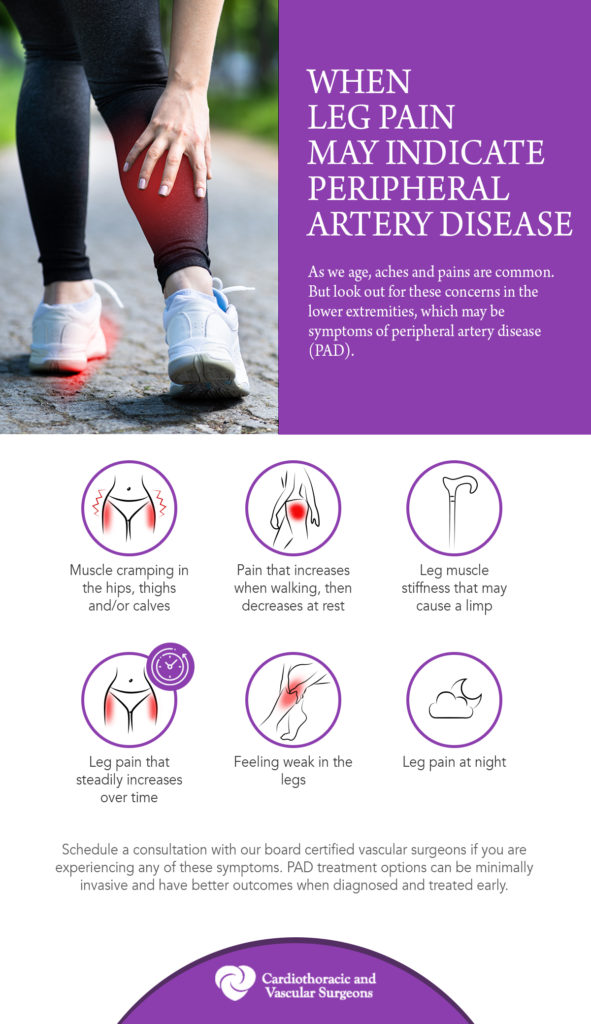People experience pain in their lower legs for many reasons. Throughout the day the pain in your legs may get worse, or your leg pain may come and go. Pain may be associated with a visible leg wound or ulcer, or may be more generalized in nature.
One of the best ways to prevent leg pain at rest is by maximizing blood flow and circulation in the legs and feet. Ways we can help do that at CTVS include:
- Medicines like blood thinners such as Aspirin or Plavix and cholesterol-lowering medications called statins
- Perform minimally-invasive procedures using special instruments such as stents, balloons, and small drills to clean out the arteries and promote blood flow (conveniently performed under moderate sedation in the office at one of our two Vascular Intervention Suites)
- Perform bypass surgery to reroute and restore blood flow
For more information, contact our Limb Preservation and Amputation Prevention Program Director Jamie Beffort, RN at (512) 323-5873.

What can I do myself to minimize leg pain?
If you are experiencing chronic leg pain (pain that is not associated with a temporary injury, strain or muscle cramp) it is important to have the cause of that pain assessed by a medical professional. If the pain is due to vascular disease, there are several things you can do to help improve your symptoms and increase comfort in conjunction with therapies recommended by your doctor. These may include:
- Performing moderate exercise (learn more about our Exercise Program)
- Managing your diet to regulate blood sugar, cholesterol, and lipids
- Avoiding or quitting smoking
- Monitoring your blood pressure
Is my leg pain due to diabetes?
While chronic leg pain can occur for many reasons, diabetes can often lead to pain in the extremities, including the legs and feet. If you have been diagnosed with diabetes and are experiencing leg pain, you may be at an increased risk for diabetic wounds which can be difficult to heal without proper treatment. We encourage you to learn more about diabetes and amputation prevention.
When is it time to make an appointment?
If you notice symptoms or have certain risk factors for PAD or experience any of the following, please contact us to schedule an appointment with one our vascular surgeons:
- You have pain in your calf, thigh, or buttocks when walking that improves after you rest
- Your legs or feet feel cooler in temperature, you have loss of hair on your legs, you have shiny skin on your feet, or have slow growth of your toenails
- You experience numbness, weakness, or tingling in your feet, especially when in bed
- You notice small, non-healing foot ulcers or leg wounds
Written by: Jeffrey Apple, MD | Last Reviewed 8 Mar 2024
Telephone No.512-459-8753
